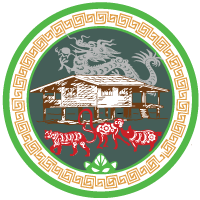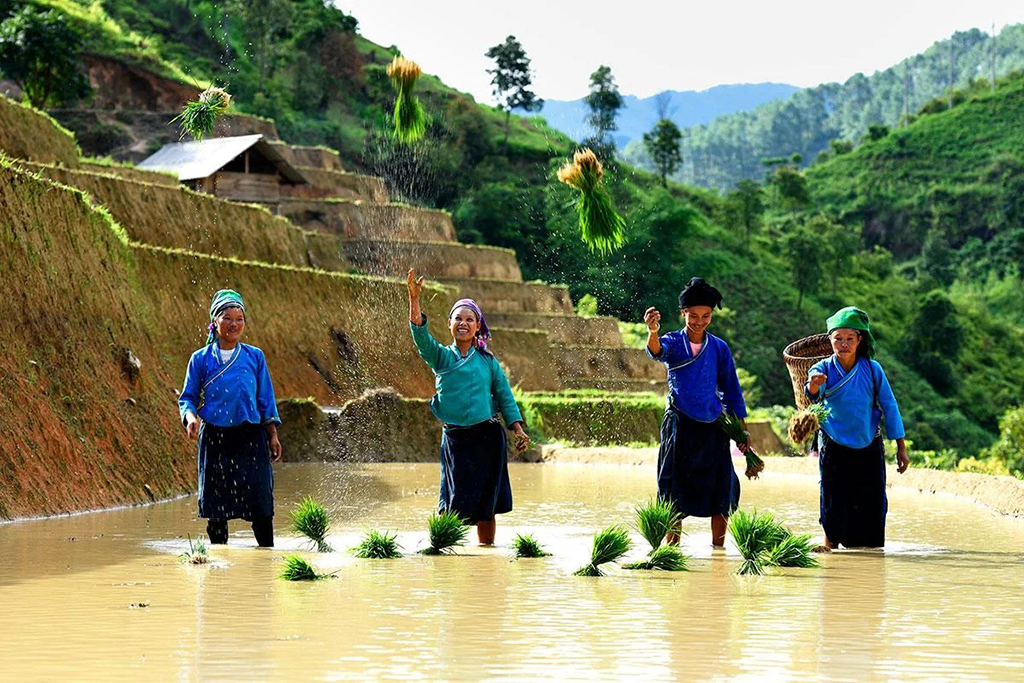In the heart of the majestic landscapes of northeastern Vietnam, in the Ba Bể National Park, lives a community rich in traditions: the Nùng. Originally from the remote regions of Chinese Guangxi, they have traversed centuries, bringing with them a unique cultural heritage. This article invites you to discover their history, customs, and way of life in harmony with nature.
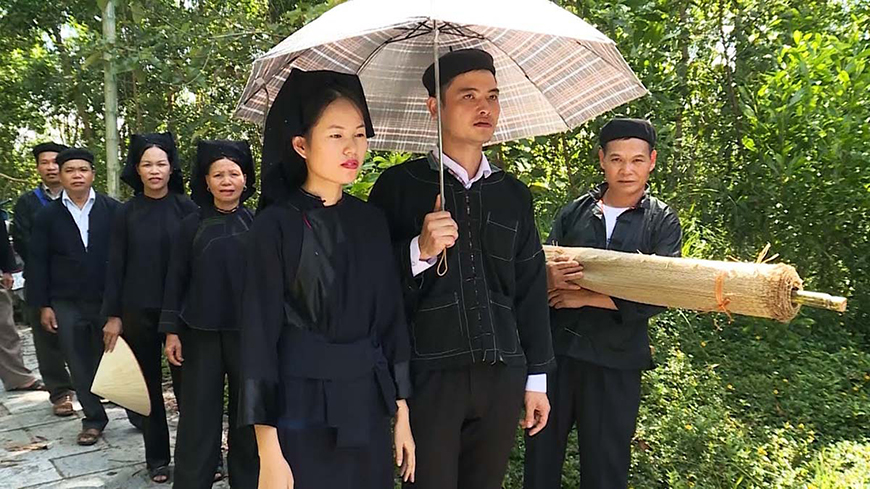
A Journey through History
200 to 300 years ago, the ancestors of the Nùng left their homeland to settle in Vietnam. Today, they form one of the country’s most important ethnic minorities, with over a million people. Their close ties with the Tày and Zhuang people reflect a shared history and a strong cultural identity.
Architecture, Reflecting a Way of Life
The traditional houses of the Nùng, whether on stilts or made of rammed earth (trinh tuong), are designed to adapt to the mountainous environment and climate. The yin-yang tiled roofs and spaces dedicated to storage, animals, and daily life are testimony to their ingenuity and respect for nature.
► The Tays of Ba Be: A Mosaic of Traditions
Language, Religion, and Spirituality
The Nùng language, belonging to the Tai-Kadai group, serves as a bridge to their origins and linguistic cousins. Their spirituality is a blend of animism, Buddhism, and Confucianism, where ancestor worship and shamanic ceremonies hold a central place. The veneration of figures like Quan Âm (Guanyin) highlights the richness of their pantheon.
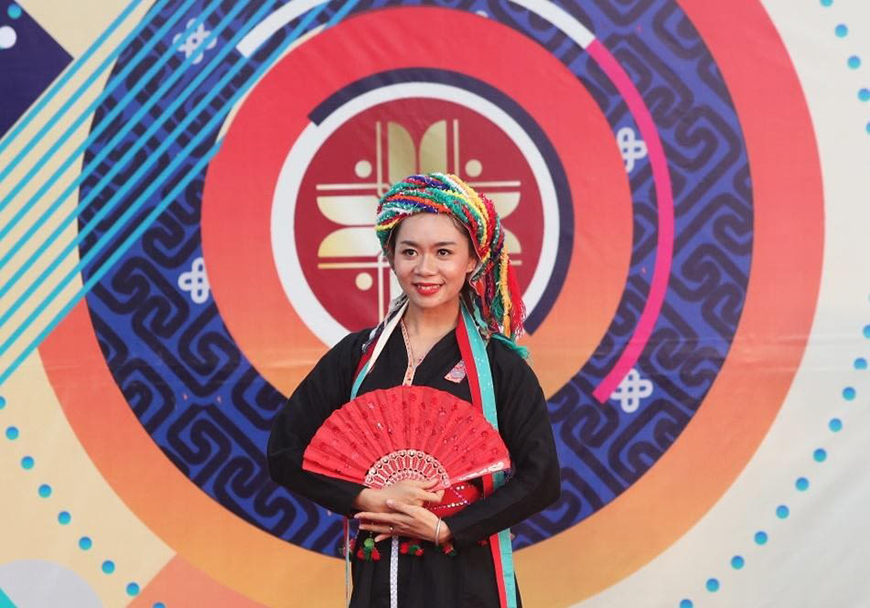
A Living Cultural Heritage
The Nùng excel in craftsmanship, with particular mastery in weaving, indigo dyeing, basketry, and silverware. Their traditional costumes, dyed with indigo and adorned with embroidery or beads, are a symbol of their identity. Women often wear square scarves folded into triangles.
Songs and Music: The Nùng have an extensive repertoire of traditional songs, orally transmitted from generation to generation. These songs accompany agricultural work, celebrations, and religious ceremonies. They use traditional musical instruments like bamboo flutes, drums, and gongs.
Tales and Legends: Oral tradition plays a significant role in Nùng culture. Tales and legends, often transmitted during gatherings, help pass down the people’s history, values, and beliefs. They feature heroes, animals, and nature spirits.
Theatre and Dance: The Nùng have developed specific forms of theatre and dance, often linked to religious ceremonies and traditional festivals. Colorful masks and costumes are used to represent spirits and characters from legends.
Traditional Games: Traditional games hold an important place in Nùng social life. They help develop skills, strength, and teamwork. Popular games include spinning tops, archery, and horse racing.
Cuisine holds a special place in the hearts and souls of the Nùng, reflecting their rich cultural heritage. Each dish tells a story, each flavor evokes a memory. Sticky rice, the king of the table, comes in vibrant colors: purple, black, red, yellow, a feast for the eyes and taste buds. Black sticky rice and ant egg rice are true institutions, symbols of celebration and sharing.
At the end of January, absinthe, an herb with multiple virtues, is transformed into delicious cakes, a highly anticipated seasonal delight. And what about the roasted pig stuffed with “mac mât” leaves? This exceptional dish, with subtly sweet aromas, is reserved for special occasions: weddings, birthdays, and other celebrations.
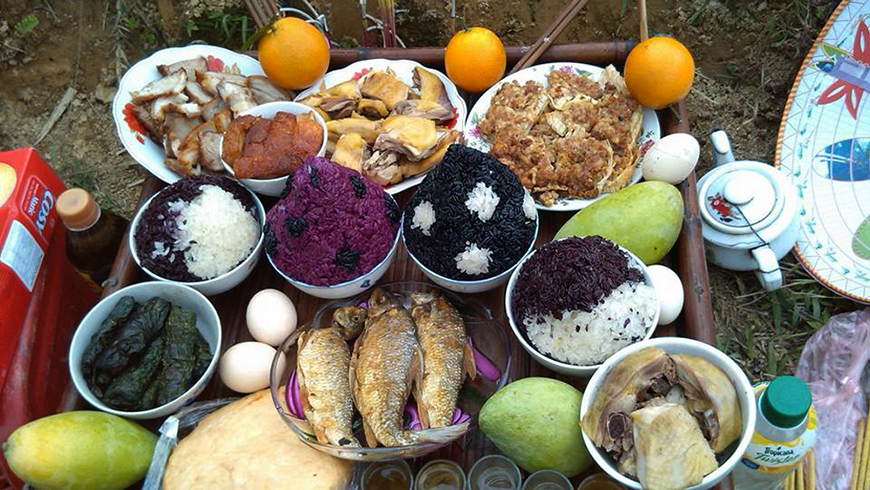
Economy and Conservation, a Delicate Balance
Long-time farmers, the Nùng practice slash-and-burn and terrace farming, cultivating rice, vegetables, fruits, and spices. Livestock complements their resources. Aware of the value of their heritage, they engage in the preservation of their traditional houses and craft practices, attracting tourism respectful of their culture.
Guardians of an Ancestral Culture
The Nùng of Ba Be National Park are an example of Vietnam’s cultural richness. Their history, traditions, and way of life offer visitors a unique experience, an immersion in a world where nature and culture are intimately intertwined. By preserving their heritage, they remind us of the importance of cultural diversity and the need to protect our common heritage.
► The H’mong of Ba Be: The People of the Mountains
Courtesy of Ba Be National Park
